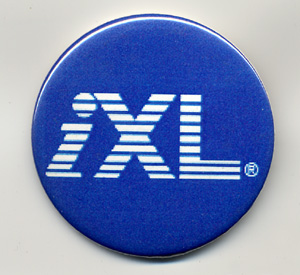Dear readers, let me vent some useless thoughts about HTML and share the fruit of my procrastination with you today.
It occurs to me that HTML code has finally become a third rate citizen of the World Wide Web. Back in the day, there were horrible WYSIWYG editors that mangled poor HTML, raped it by adding their own non-HTML tags and in general produced bloated and unreadable mess. They still exist today. But now most sites are script generated, so rarely do you see clean, beautiful and handcrafted HTML code when you view the source.
One of the worst offenders is Microsoft, of course. It gave FrontPage, an unholy product of a dying company called Vermeer Technologies (I’ve read in this book that the price of FrontPage was huge and number of copies sold – miniscule) an eternal life as a part of the Office Suite. Other Office programs always produced horrendous HTML. And now, they don’t even want developers to touch HTML directly. They added extra layers – Server Controls (again, plans for VTI extension and FrontPage come to mind) and Web Forms to isolate them from the language that can be learned in 20 minutes and mastered in a few years.
I can’t say that positive things did not happen. For one, fewer people write in old skool all-caps HTML tags. All lowercase tags are so much more readable.
Also now it’s probably safer to put little Easter eggs and funny notes in HTML comments. Are there more of those around? I don’t know. But the oldies but goodies are still out there.
Famous hacker JWZ’s enigmatic page contains this haughty comment:
<!– mail me if you find the secret –>
<!– (no, you can’t have a hint) –>
Smarter people than me tried, but failed to find meaning in in the 404 lines of what seems to be a hex dump. Former Livejournal user mcgroarty, for instance, wasted a good chunk of his time on this. Where is his blog now, by the way? Does anyone know?
What I noticed though is that the page is not static as mcgroarty probably assumed. It changes with time. More than that, it seems like it is not the same data – it probably cycles through different files. You can clearly see that if you look at http://www.jwz.org through the wayback machine. Meanwhile you can see the old design featuring the Jamie’s cool terminal graphics likeness. You can see the old design get resized, then get replaced with the 404 line nightmare. Then “mail me if you find the secret” gets added. Enough people send emails and JWZ, always eager to save some time, adds “(no, you can’t have a hint)”.
Are these 404 a cruel joke – meaning not found?
I suspected that the 404 lines show chunks of the old green image that I mentioned, or are generated from web collage. When I looked at the famous animated compass gif (the one that replaced the Netscape diddler when you typed in about:jwz or went to JWZ’s old homepage in Netscape 1.1 and some other early Netscape version I think) I found another hidden message from JWZ:
“You have a lot of free time on your hands, don’t you?
Tell jwz@jwz.org that you found the secret message!
http://www.jwz.org/
about:jwz
“Some people will tell you that slow is good — and it may be, on
some days — but I’m here toò tell you that fast is better. Being
shot out of a cannon will always be better than being squeezed out
of a tube. That is why God made fast motorcycles, Bubba.”
— Hunter S. Thompson
”
Oh, Jamie, I have very little free time. But whatever free time I have I usually end up wasting on stupid things.
This does not seem to be the solution to the 404 line homepage puzzle, but the heck with it.
Russian-speaking readers can entertain themselves with reading comments over at tema.ru. There are a couple of hints of hidden links, a few sprinkles of profanity, showing off about Photoshop mastery. Outstanding advice to journalists that was there in the earlier version is gone. I also remember seeing a completely blacked out page about his photo equipment there (you needed to do control-a trick to see it) in a very old version of the site. http://www.design.ru has its share of rowdy commentage.










